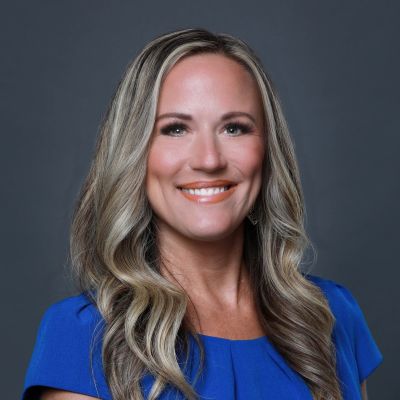
At one point during the first year of COVID-19, if I had heard the words “work/life balance” from my employer, I would have blown a fuse. With my teenage daughter’s senior year of high school playing out on a laptop in the background of my Teams calls, my husband’s conference calls in the background of that, the TV blaring news of a global pandemic and societal meltdown, and the dog barking on top of all of it—achieving work/life balance was a laughable fantasy.
Although the chaos of 2020 has somewhat abated, the economic and social impact of COVID-19 is still disproportionately impacting women as they balance childcare concerns with returning to work in the office or reentering the workforce after experiencing pandemic-related unemployment. Consider the following statistics from CNBC:
- Between February 2020 and February 2021, more than 2.3 million women in the U.S. left the labor force, compared to around 1.8 million men.
- In 2020 alone, women globally lost more than 64 million jobs, which equals 5% of the total jobs held by women. By comparison, 3.9% of men’s jobs were lost last year.
- During the pandemic, mothers have been three times as likely as fathers to be responsible for a majority of housework and childcare.
- This fall, roughly one in four women said they were thinking about downshifting their careers or leaving the workforce completely due to the COVID-19 crisis.
If there’s one thing we’ve learned in the past two years, it’s that adjusting to the unexpected has become the new normal. Is achieving the ideal work/life balance an unrealistic fantasy in the current environment? If so, what expectations do we need to adjust?
Advice from the Greats
Oprah Winfrey and Dolly Parton are uncontested as two of the top female entrepreneurs of the past three decades. Here’s what they have to say about striking the ideal work/life balance:
Oprah: "I've learned that you can't have everything and do everything at the same time."
Dolly: "Never get so busy making a living that you forget to make a life."
Which, okay, Dolly and Mama O. A little more help? While any advice from these towering figures of female empowerment is not to be taken lightly, they don’t exactly provide a how-to guide.
I think Maya Angelou gets closer to providing actual, actionable advice about dispersing your energy between home life, childcare, career goals, mental and physical health, and financial stability:
Maya: “Nothing will work unless you do.”
In other words, if you aren’t getting enough sleep because you’re staying up late catching up on work, are missing doctors’ appointments to make the daycare drop-off, or are too drained from a long week to enjoy recharge time with friends and family, you’re not distributing your energy effectively and your mental and physical health, work performance, and relationships will all suffer.
When you’re able to function as a whole, healthy person whose needs are being met, it’s easier to dedicate more energy to nurturing external goals.
Is having true work/life balance an unobtainable goal?
For years, I would only hear about perfect worlds of balance and never understood why I was feeling so overwhelmed with trying to create my own. It wasn’t until I had authentic conversations with women in business who also were trying to balance their family and professional lives that I realized we were all facing similar challenges.
It changed my entire perspective. I had been setting unrealistic standards for myself! I have slowly learned ways to manage it. For example, when I’m at work, I’m all work; when I’m at home, my focus is on my family (but I still check emails after everyone has gone to bed). This eases my stress.
According to the American Psychological Association, “Working women are encouraged to recognize that the perfect balance between work and home life is an unattainable myth. Instead, consider work among the multiple life roles that you manage along with other roles. Each role may require more effort/time than others across the course of the year and throughout your life. Seek help from others in your work and life environments to share the load. Prioritizing your roles can help you decide how best to manage your time across your various roles and responsibilities.”
The Importance of Building a Professional Support Network
Most of us are familiar with the phrase, “It takes a village to raise a child.” These days, it takes a village to do just about anything, including running a business or leading a team. As Alison Pincus, co-founder of One Kings Lane, puts it, "Surround yourself with a trusted and loyal team. It makes all the difference."
Don’t just network—consciously create a professional support network that will help drive your career development. Surround yourself with women who inspire you. Find a mentor. Have honest conversations with co-workers and peers who struggle with the same challenges you do. Become a resource for other women in your professional community. Start a social networking group to share helpful information with each other. Make female empowerment in the workplace a group effort!
Conclusion
Since 2007, there has been a 60% increase in women-owned businesses across the country. There has also been a larger societal shift in confidence among female leaders and entrepreneurs. Conversations no longer revolve around wondering whether women can make it in the workforce. The question now becomes, what’s the best use of our talent and energy?
Female business owners know all about being pulled in different directions. SWBC PEO is dedicated to helping your business streamline operations so you can direct your energy where you need it most.
When you work with us, our team of experts can take over stressful and time-consuming tasks such as payroll, benefits, HR, and compliance, allowing you to introduce more balance into your workday.
